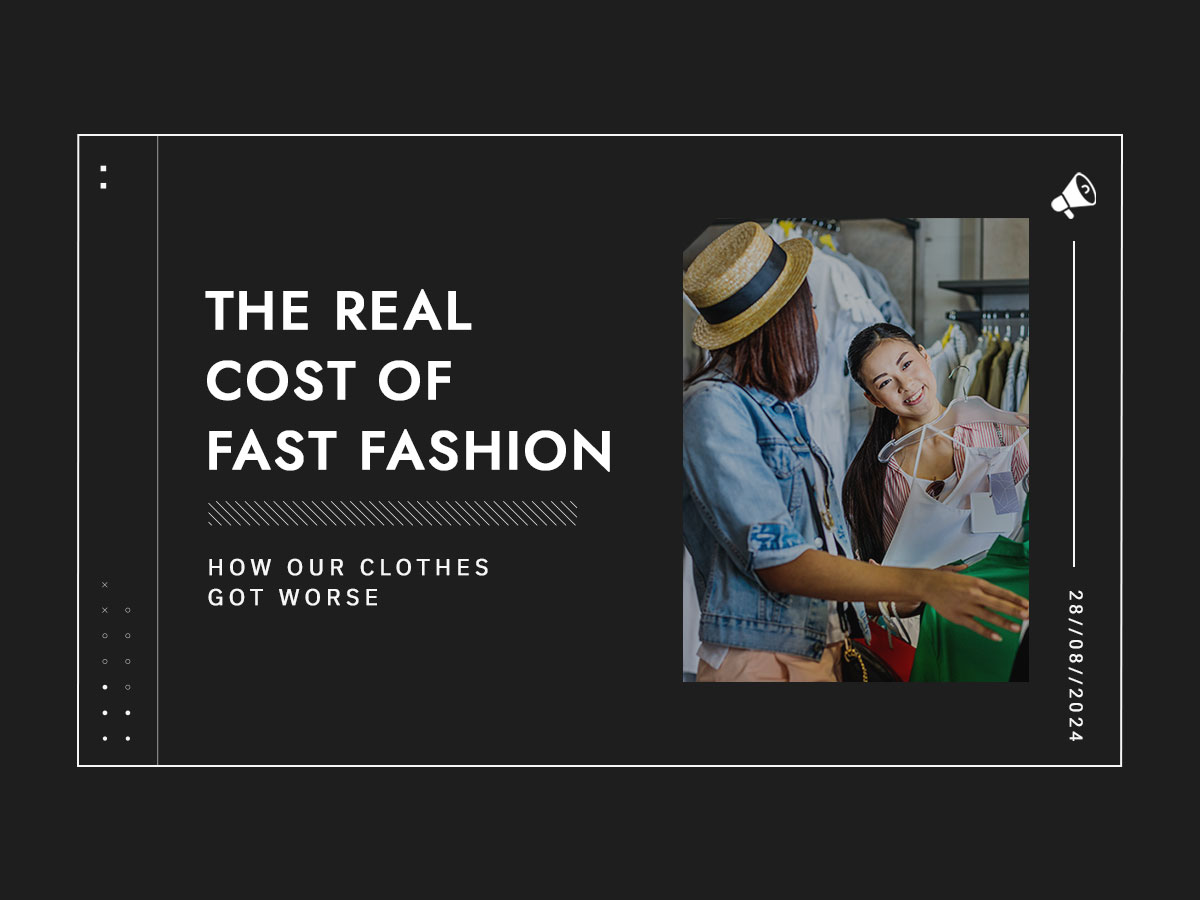The Real Cost of Fast Fashion
Remember when shopping for clothes felt like an investment? You’d buy a few well-made pieces, and they’d last you for years. Today, things are different. Fast fashion giants like Zara and Shein have flipped the script, prioritizing speed and low costs over quality, and the impact is felt far and wide.
The Decline in Quality
It wasn’t too long ago that brands like Abercrombie & Fitch were known for their high-quality, long-lasting clothes. But walk into their stores today, and you might notice a difference — thin fabrics, loose threads, and synthetic materials have replaced the sturdy garments of the past. The reason? Fast fashion has drastically shortened the production cycle. Where designers once spent months perfecting collections, brands like Zara can go from idea to store shelf in just 15 days. This emphasis on speed means cutting corners, resulting in cheaper, lower-quality clothing.
Zara’s 15-Day Turnaround: The Secret to Fast Fashion
Zara revolutionized the fashion industry with its remarkable 15-day turnaround from design to store shelf. How did they pull this off? Zara streamlined their production process by building high-tech factories close to their headquarters in Spain. These factories are connected via an underground monorail, allowing for rapid communication and transport. Robots work around the clock, cutting and dyeing fabrics, which are then sent to a network of smaller workshops for final assembly. By producing small batches, Zara reduces the risk of unsold inventory and can quickly adapt to changing trends based on real-time feedback from stores. This model allowed Zara to respond to fashion trends almost as soon as they emerged, outpacing traditional fashion cycles that took months to develop.
The Environmental and Ethical Impact
But the decline in quality is only part of the story. Fast fashion has a darker side that’s often hidden from view. The industry’s relentless push for cheaper production has led to widespread exploitation of workers in countries like Bangladesh and China. Factories operate under unsafe conditions, with workers putting in long hours for meager pay. The 2013 Rana Plaza disaster, where over a thousand garment workers lost their lives, is a stark reminder of the human cost of cheap clothing.
And then there’s the environmental toll. Fast fashion encourages overconsumption, leading to massive amounts of textile waste. Clothes made from synthetic materials like polyester can take centuries to decompose. In places like Chile’s Atacama Desert, mountains of discarded clothing are growing larger every year. It’s a sobering reality—our desire for cheap, trendy clothes is filling landfills and harming the planet.
The Role of Social Media
Social media plays a significant role in driving the fast fashion industry. Platforms like Instagram and TikTok have created a culture of constant consumption, where influencers showcase new outfits daily, and consumers feel the pressure to keep up. This has led to the rise of ultra-fast fashion brands like Shein, which can produce and release new clothing items in just three days. It’s fashion on demand, but at what cost? The quality is often poor, and the labor practices behind these products are highly questionable.
Is There Any Hope for Change?
Despite the growing awareness of the issues surrounding fast fashion, the industry shows no signs of slowing down. Brands like Shein continue to thrive, with billion-dollar valuations and plans for further expansion. Efforts to regulate the industry face significant challenges, with companies lobbying against legislation that would hold them accountable.
Conclusion: The True Cost of Fast Fashion
Fast fashion has transformed the clothing industry, making it possible to buy trendy clothes at incredibly low prices. But this comes at a significant cost—lower quality, environmental degradation, and the exploitation of workers. As consumers, it’s important to recognize these costs and reconsider our relationship with the clothes we buy. While the industry may be slow to change, understanding the impact of our choices is the first step toward a more sustainable and ethical future in fashion.
